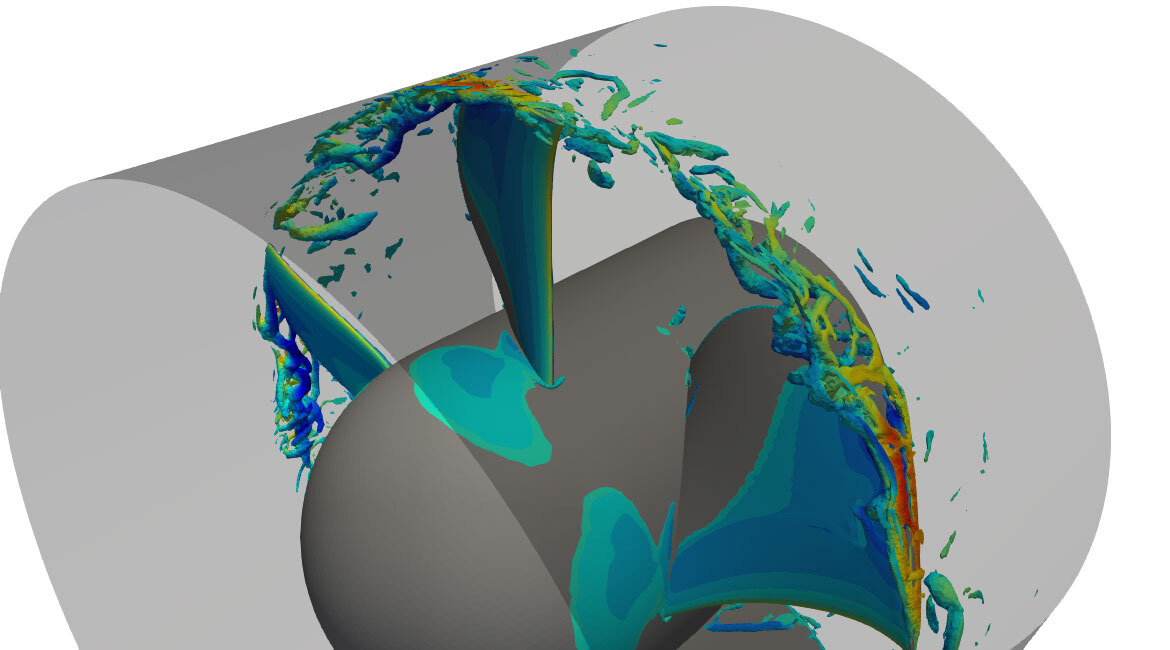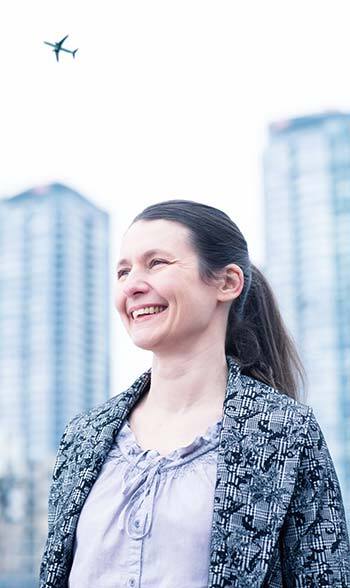A Fascination with Tangible Results

Unsteady flow simulation in an axial compressor. The leakage flow between the blade tip and the duct forms turbulent structures that impact the next blades. This mechanism generates noise that we are aiming to model.
A professor in the Department of Mechanical Engineering at ÉTS since 2019, Marlène Sanjosé is interested in digital simulations in fluid dynamics, turbo machinery, as well as energy and aeroacoustic efficiency. Her passion for physics is immediately apparent when she talks about fluid flow mechanics, her favourite subject.
“These are complex, nonlinear problems. They have a certain beauty. I wanted to better understand these fascinating physics problems.”
To achieve this, the researcher earned a degree in engineering from ENSEEIHT at INP in Toulouse, France, a master’s degree in fluid dynamics, energy, and transfers at Toulouse INP, and a PhD at CERFACS in Toulouse. Her research work focused on numerical simulations of liquid fuel injection into aeronautical burners. She came to Québec in 2010 to conduct postdoctoral research in aeroacoustics at the University of Sherbrooke.
In her work, Marlène Sanjosé tries to reproduce consistent flow structures and motions using numerical simulations. This makes it possible to identify the main dynamic flow modes and its interactions with the solid parts of the investigated systems.
“I am especially interested in turbomachinery flows. They are, quite simply, rotating machines, and they are everywhere, in fans, jet engines, pumps, gas, hydraulic or wind turbines, and the list goes on. It’s very diverse!”
Rarely has a discussion on fluid dynamics resulted in such a beautiful illustration. “Through our simulations, we are able to reproduce the entire flow. It’s a bit like going under the sea—under the waves—and being able to look at the structure underneath.”

Marlène Sanjosé, professor in the Mechanical Engineering Department
Many Applications
These simulations help design more efficient machines. “You need machines that meet different constraints; the geometry is defined by the demand for it. We can predict optimal shapes, and the preferred types of materials to be used to address fluid-structure interaction issues.” These decisions will have an impact on the lifespan of the turbines, for example, their energy efficiency, or even their noise sources.
Marlène Sanjosé’s work has many applications, such as improving the design of ventilation, heating or air conditioning systems in many fields including buildings, industrial facilities or aircraft cockpits. The developed methods also apply to reduce noise sources of propellers or turbomachinery in the aeronautics industry.
Research First
Research allows Marlène Sanjosé to satisfy her great curiosity and her desire to go further. “I like to focus on certain aspects to get the most out of them, and to be able to dig deeper. You can always move forward.”
She also enjoys knowing that her research is useful. “We provide needed answers regarding important models for manufacturers. In order to develop them, we need to conduct parametric studies that companies can’t always afford. We have the time to study these issues.”
When asked what she likes least about the research, she struggles to find an answer. “Really, I couldn’t tell you. All the steps are interesting, I can’t think of any negative!”



